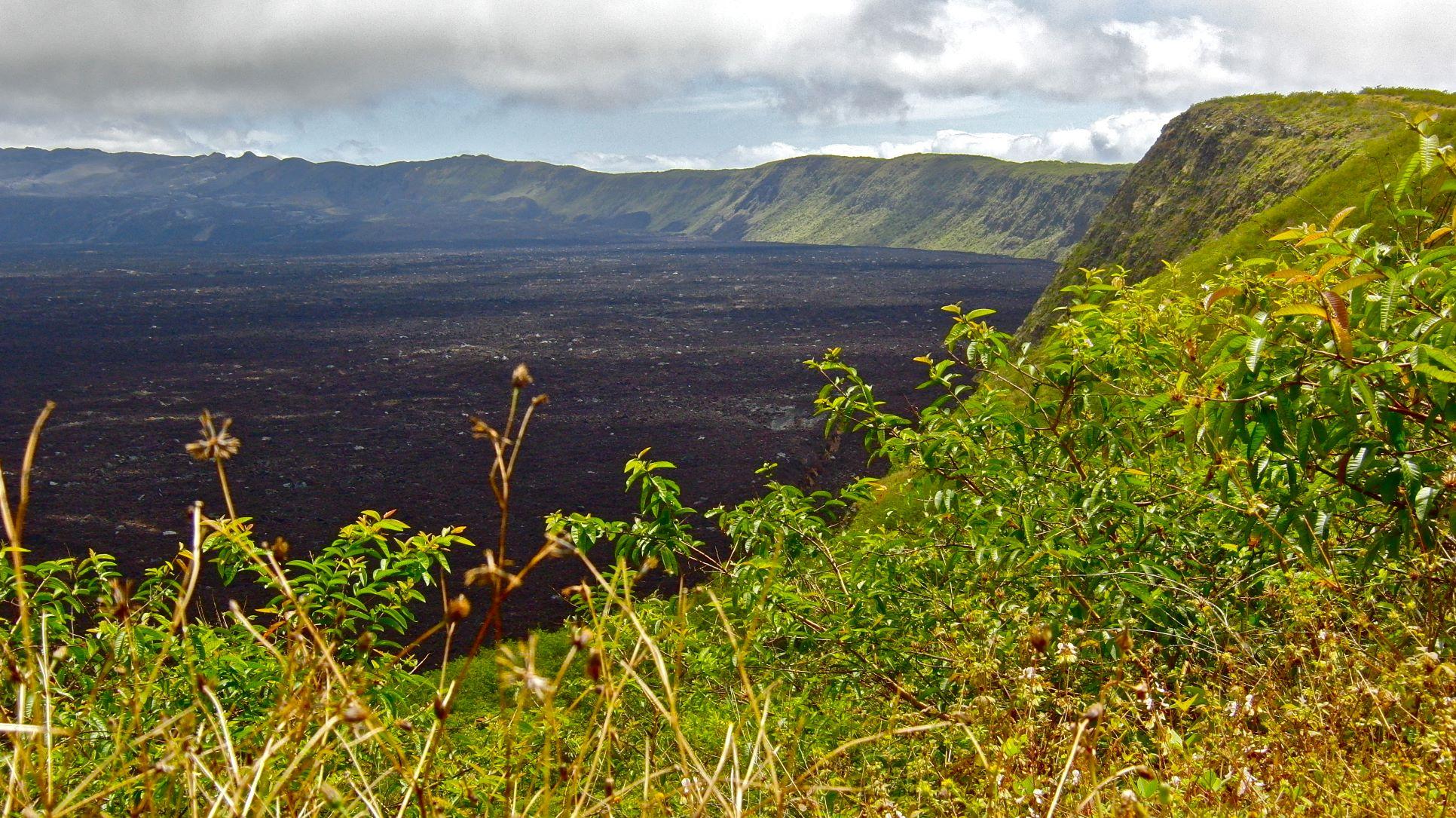
Submitted by Dr C.M. Martin-Jones on Fri, 10/03/2023 - 19:30
Many of the most violent outpourings of volcanic activity in history are fed by mushroom-shaped pillars of hot rock extending deep to Earth’s mantle, the region between the core and the crust we walk on.
These ‘mantle plumes’ can be active for millions of years — leaving huge lava fields and chains of volcanic islands in their wake. But the exact make-up of these plumes, and how this material rises up to the surface to be erupted, is poorly understood.
Scientists from the University of Cambridge have now studied lavas erupted from the Galápagos islands to find out how the ingredients making up the mantle plume beneath the region have changed over its lifetime.
The Galápagos hotspot has scorched a record of volcanic activity into the tectonic plate above for over ninety million years. “Galápagos is special because we have such a good record of its history,” said Cambridge Earth Sciences’ Dr Carrie Soderman, lead author of the study which was published in Science Advances.
“The hotspot has left a trail of ancient lavas and rocks, and their chemistry helps us unravel the plume evolution from the early and hottest phases to modern volcanism,” said Soderman. The team used a new tool — stable iron isotope analysis — to get a more accurate picture of the lava origins and its journey to the surface.
They found that the Galápagos plume is fed by an area of the lower mantle which was contaminated millions of years ago by small amounts of rocks from the Earth’s surface. This material would have been dragged down from the ocean floor by plate tectonics, before making its way up to the surface again through the mantle plume millions of years later.
“The new geochemical methods meant we are able to detect much smaller amounts of oceanic crust and see through trends skewed by the plume cooling through time,” said Soderman.
“Our data shows that oceanic crust is being brought up by this mantle plume, but it’s only a very small amount – less than ten percent of the total material being melted beneath the plume and remarkably, this proportion stays constant for ninety million years,” said Soderman.
Aside from helping scientists understand the chemical make-up of the parts of the Earth’s interior sampled by mantle plumes, it also shed lights on how these hot plumes continue to drag up dense surface material from the lower mantle over millions of years. “This work is really exciting”, says senior author Prof. Helen Williams, also from Cambridge’s Department of Earth Sciences, “A remaining puzzle is how plumes like Galápagos manage to drag up both this surface recycled material and deep material from the Earth’s core-mantle boundary together.”
Soderman et al., Science Advances (2023), The evolution of the Galápagos mantle plume, DOI: 10.1126/sciadv.add5030
